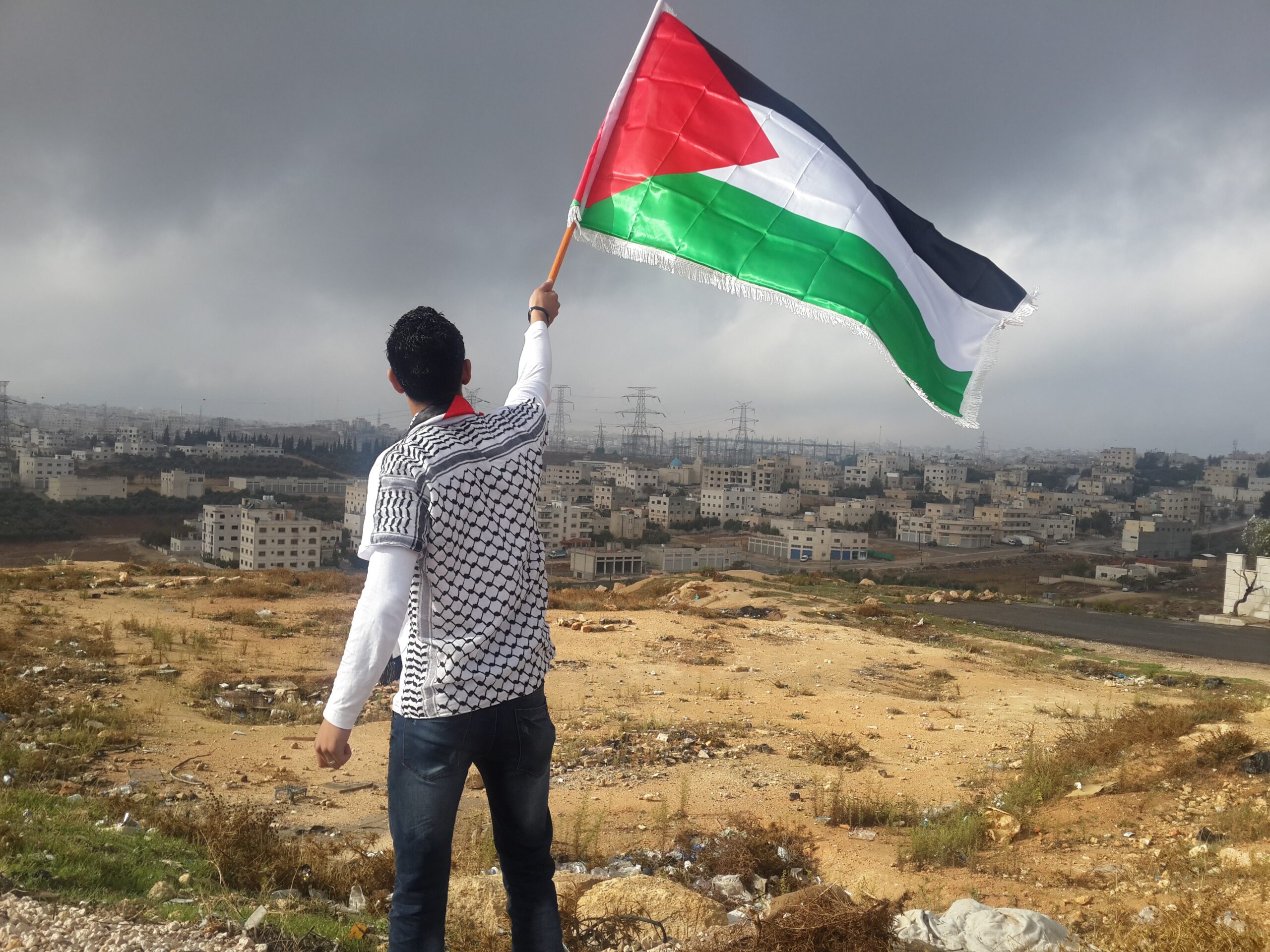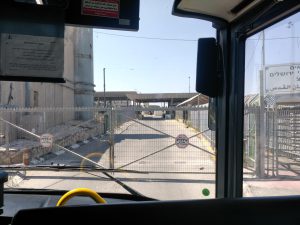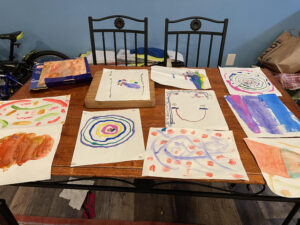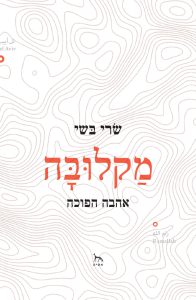My daughter’s kindergarten is making a video about nationalities. It’s a complicated topic for us. Her father and I can’t even drive the same car
I came home at 4 a.m. from a short work trip abroad. Osama was sitting in front of the computer. I kissed him. He told me that Adam had woken up at 3, and after he managed to put him back down, Osama couldn’t sleep anymore. I got into bed alone, but almost immediately Forat woke up. I heard Osama approach her.
“Surprise!” he said. “Guess who came home?”
I entered the children’s room and kissed Forat’s sleepy, smiling face. I sat next to her, my hand on her back, until she fell back asleep.
At 6:30, Adam woke up. “Who came home?” Osama asked. Adam ran to our bedroom, smiled when he saw me, and climbed into bed. Usually he only nurses before sleeping, but I hadn’t breastfed him or pumped for three days. When he pulled at my shirt, I let him nurse. Forat was jealous. She made crying noises and tried to push Adam away from me. I wrapped my arms around her.
“Do you know that today you’re supposed to dress in the colors of the Palestinian flag?” I asked Forat.
“How do you know?”
“Miss Chantal send us an e-mail. For Palestinian Independence Day”.
“I can’t believe that Palestinians are really celebrating independence,” Osama said, entering the room. “How much can we fool ourselves?”
I ignored him and spoke to Forat: “Let’s find you red, white, green and black clothing.”
Forat picked up a pink Hello Kitty shirt from the floor, stained with ketchup and orange soup, apparently from the previous night’s dinner.
“Sweetheart, they want the colors of the flag,” I said.
“Hello Kitty’s ribbon is red.”
During my brief time away from her, I had promised myself to try to empower her in every interaction and to avoid, as much as possible, judging her.
“You decide what you want to wear,” I said. And then I stumbled. “But sweetheart, the kindergarten asked for the colors of the flag.”
In the meantime, Osama worked on Adam. We found black pants, and I suggested a red button down shirt that my mother had bought for him. Adam protested when Osama dressed him in the shirt.
“Ek!” he screamed, pulling on the sleeves and pleading with Osama to remove it.
“Baba, the shirt is beautiful,” Osama said.
“Ek!” Adam screamed in desperation. He appealed to me, pulling at the shirt, a look of horror and pleading on his tiny face. We compromised on a red T-shirt. Forat agreed to wear a red dress.
At Adam’s daycare, the children were dancing to percussive music or sitting on the floor coloring flags. Wafa, the teacher who always takes Adam from me before I finish saying goodbye, approached us.
“Why isn’t he dressed?” she asked.
I looked around us. All the children wore intricate traditional Palestinian costumes, embroidered dresses and wide sirwal pants. They had sent an email asking us to dress the children in traditional clothing, but I didn’t think the other parents would really buy a special costume for one day at daycare.
“He’s wearing the colors of the flag,” I said. Janna, aged three, arrived, and opened her coat to reveal a narrow black dress with intricate embroidery in bright red, blue and green. Was that hand-sewn? Who are these parents? If Adam makes it to daycare in a dry diaper and having brushed his teeth, I’m ready to give us the Parents of the Year Award.
I went back to the car and began the drive to Forat’s kindergarten.
“I want Baba to pick us up from kindergarten today,” she said.
“Baba can’t, sweetheart,” I told her. “He doesn’t have a car. When he buys a car he can pick you up.”
“Why can’t he pick us up in this car?”
“It’s related to the soldiers, my love, the ones who have trouble sharing,” I said. We tell Forat that the soldiers don’t let her father cross checkpoints with us, because it’s hard for them to share. “In order to let Israelis but not Palestinians cross checkpoints, they want Israelis to drive Israeli cars and Palestinians to drive Palestinian cars. When we get to your kindergarten, I’ll show you my car. There’s something called a license plate – a line of numbers – that is yellow. But when Baba buys a car, the license plate will be white or green.”
“Oh,” Forat said. “And Baba is Palestinian?”
“Yes, sweetheart.”
“Is it like that for Diana’s family, too?” she asked, referring to her Israeli friend from Philadelphia.
“If Diana’s parents come here, then yes, they will drive an Israeli car, with yellow plates.”
“But they let children ride in all the cars?” Forat asked.
“Yes, sweetheart. They let grown-ups ride in all the cars, too. You remember that Baba rides with us in this car. You’re just not allowed to drive an Israeli car, if you are Palestinian.”
“But it’s not like that in Philadelphia?”
“No. All over the United States, everyone can drive in everyone’s car. You remember that in Philadelphia Ima and Baba had one car, that we both drove in?”
We arrived at her kindergarten, in the new French school in town. There, too, the atmosphere was festive. The children were getting ready for some elaborate activity that required cutting large quantities of colored paper. Forat’s teacher, Miss Chantal, approached me.
“I wanted to ask you,” she said in her charming, heavily French-accented English. “We’re making a video in which the children present their nationalities, I mean for those who have an additional nationality. I asked Forat what her nationality is, but she didn’t answer. She’s also American, right? Can I say that?”
“Forat is Palestinian and American and Israeli,” I said. “I mean, she has two formal citizenships, Israeli and American, and she is also Palestinian.”
“Ah, OK,” Miss Chantal said. “I wanted to check, because she didn’t answer.”
I tried to imagine what Forat understood from Miss Chantal’s question. I found it strange that they expected five-year olds to know what a “nationality” is. It’s kind of a complicated question. In an alternative universe, Forat could have come to kindergarten on Independence Day wearing blue and white.
Forat ran up to her friend, Yamen. “We’re both wearing red!” she said in fluent Arabic, her accent perfect. That child fits in everywhere, I thought. She looks beautiful in red, and in pretty much every other color, too.
This post was also published at haaretz.com on March 11, 2020:



